#bladderwort
Text
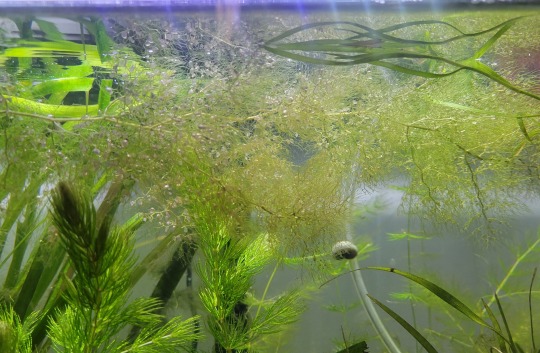

The Bladderworts are some of my favorite native plants for home aquariums - the little sesame seed looking parts are gas filled sacs used for capturing and eating tiny animals!
68 notes
·
View notes
Text
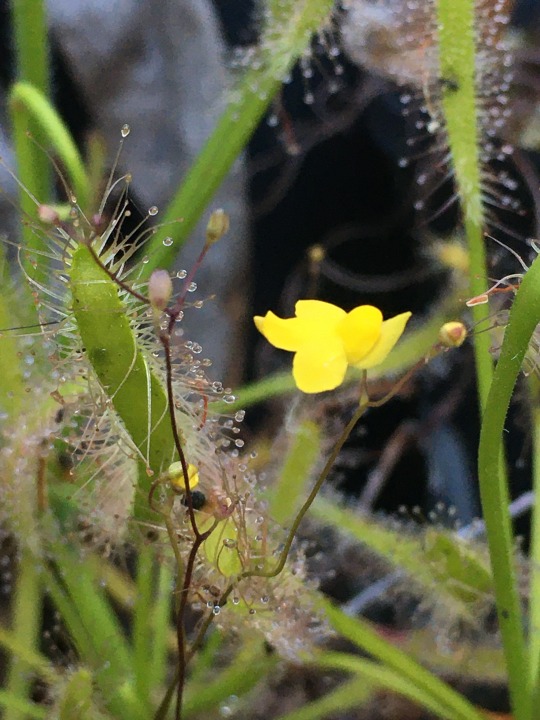

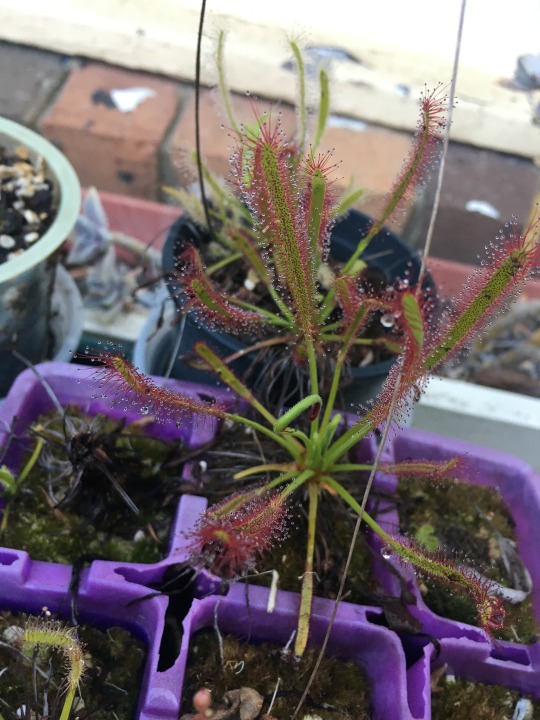

shoutout to plants I never purchased but now grow in my collection in large numbers. gotta love those guys
#carnivorous plants#carnivourousplant#plantblr#carnivorous plant#carnivorousplants#gardening#my plants#sundews#drosera#utricularia#bladderwort
44 notes
·
View notes
Text
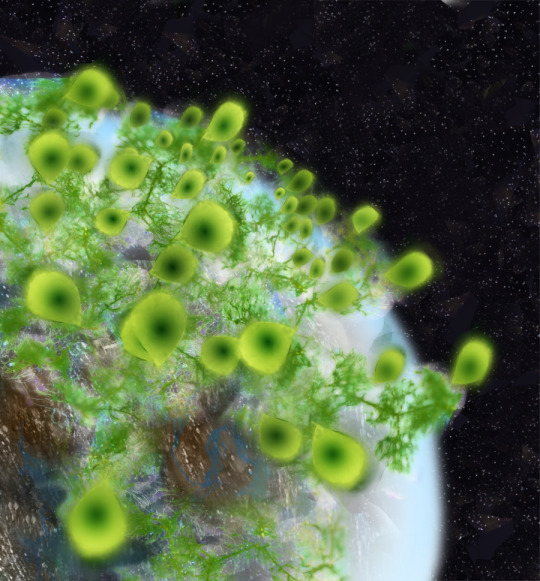
(This is content for Humans-B-Gone!, an animated sci-fi series about a giant praying mantis who works in pest control--those pests including humans. Watch it on YouTube here: https://youtube.com/c/humansbgone )
Pictured: Tricularia in orbit over Angion.
Angion is an Earth-like planet, orbiting a single sun on a cycle only slightly longer than Earth's. The surface is uninhabitable to most lifeforms, apart from radiotrophic fungi and bacteria.
Tricularia is the site of our story, a giant mutant bladderwort growing out of Angion. An actual bladderwort is a carnivorous plant, and the bladders trap and digest unfortunate little animals that bump into them, such as water fleas. Tricularia, however, works as a sort of massive organic space station.
Each bladder (each about the size of a small country) contains and tightly controls a unique ecosystem, from forests miles deep to jeweled glass deserts, and even more bizarre.
There are 86 bladders (not counting sub-bladder systems) spread out in orbit around the planet, with more bladders growing still. All minerals must be pumped up by Tricularia from the planet below. As a result, the only soil is humus, the place isn't old enough for most rocks, and most abiotic substances are very rare.
Because of the small size of the bladders, there is no gravity (or at least, so little gravity as to be virtually nil) apart from the gravity-like effects of the Unknown Nature. If not for the bladder walls, all oxygen would escape into space! The bladders also circulate air, creating wind currents by "breathing."
On the bladders live not only macrovolutes, but such lifeforms as forest octopuses, huge flying microbes, weasels with prehensile organs…and of course, human beings.
250 notes
·
View notes
Text

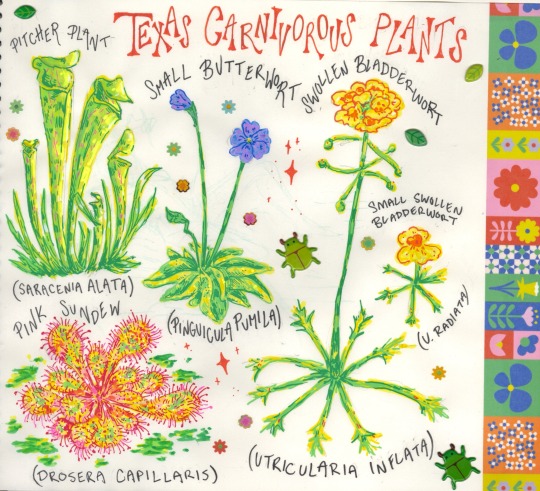
Sketchbook pages 4-5 🌼 1/26/24
#my art#sketchbook#sketch book#multimedia#illutrator#illustration#carnivorous plants#cicadas#bladderwort#sundew#pitcher plant#butterwort
12 notes
·
View notes
Text

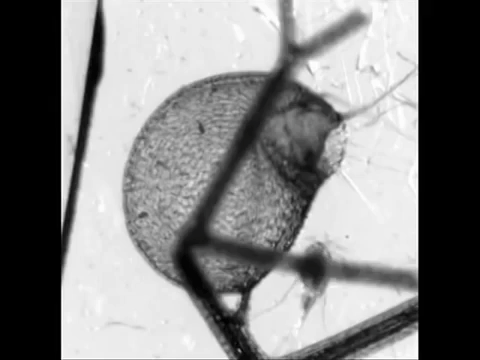

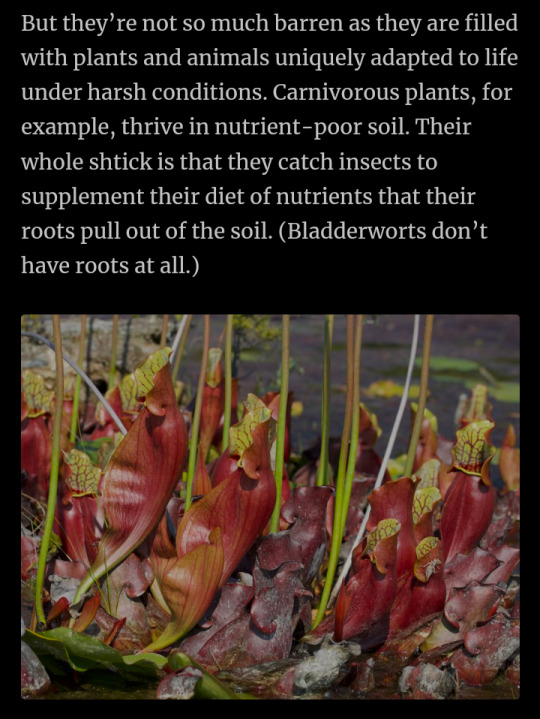

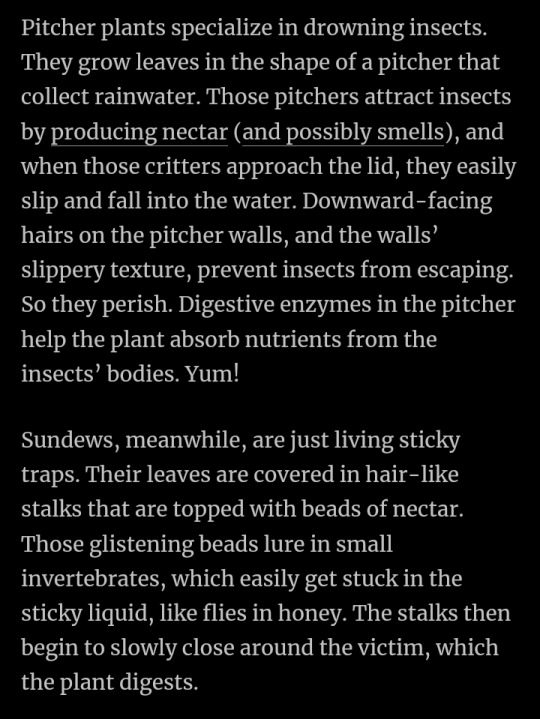
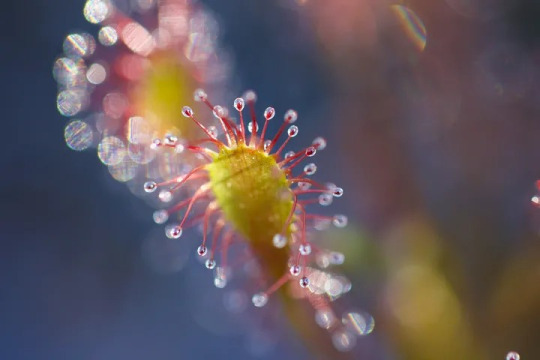
31 notes
·
View notes
Text
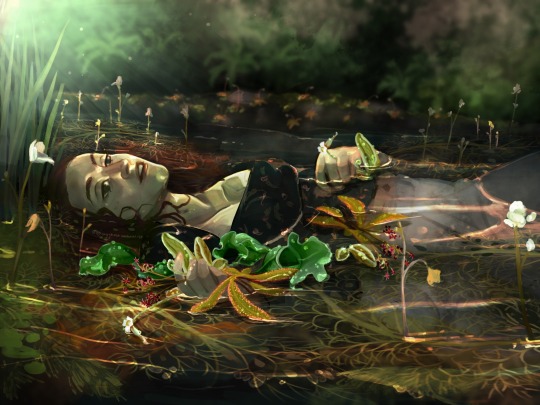

I’ve been thinking about the Ophelia / beautiful dead girl thing that is played over and over in a confusing way. I can’t really put it into words, something about there being layers to motifs and plants that are rarely pushed deeper than the immediate concept. I thought I’d try something different. These are all “carnivorous” plants, not truly ‘meat-eating’ more like catching vitamin supplements or making their own nutrient rich soil.
The first plant I wanted for this was Utricularia, the ‘bladderworts’ (bladder= sac, wort =plant), they’re under the surface. They have trigger hair bladders of varying size, some are just to catch zooplankton. They’re beautiful under the water but with just stems and flowers poking out above.
I picked the plants I chose carefully, but a lot of these notes I found after the fact. (and @crypto-botanist had perfect pictures and a very enviable username) like Drosera linearis, the sundew with red flowers. They reproduce asexually so energy sunk into flowers that don’t actually facilitate sexual reproduction is bananas! I used wiki to look through species lists and apparently Darwin said this: “…at the present moment, I care more about Drosera than the origin of all the species in the world.”
Sarracenia purpurea, the pitcher plant I chose (pics from crypto-botanist, again), is the only species that grows in cold climates. A wide distribution range is a huge advantage when ~97% of your genera’s habitat is gone. The weird thing, though, is that their seeds usually get only 5cm away from their parent plants. How did they get spread all over? We don’t know! They also have a microbiome in their pitcher fluid that helps them break down their … acquired nitrogen source. As I’m primarily a microbiologist, this makes me very happy.
The last is a butterwort, Pinguicula lusitanica, isn’t the most memorable carnivorous plant. It can be weedy for cultivators though it isn’t very genetically diverse to adapt to environmental change, still vulnerable despite temporary proliferation. Mostly this one represents one of the things I love about botanists, the love for the inconspicuous and seemly unremarkable. This popped up in the notes I found from pinguicula.org under the pictures took in the field with little personal notes and exclamation points. The ability to be obsessed with something no one else thinks about and just being excited that it exists. Scientists are very sentimental.
So I guess the flowers I chose here are analogous to Ophelia’s. Showy plants with more to offer if you manage to look (re plant blindness) and the way I’ve grown attached to this concept of poison ivy but actually as sentimental, passionate, angry and conflicted as we can be. Something like that.
#poison ivy but she’s an actual botanist#botany 2022#botany#drosera#utricularia#sarracenia#pinguicula#poison ivy art#poison ivy#poison ivy dc#pamela isley#carnivorous plants#pitcher plant#sundew#bladderwort#butterwort#character design#concept art#ophelia#illustration#artists on tumblr
178 notes
·
View notes
Photo

It is interesting how horror stories around water and the aquatic tend to be set in and around the ocean. Like, I get it, the sea is a mysterious, unfathomable place with its fair share of leviathans, unexplainable phenomenon and bizarre fates. When I travel across the ocean, I too get uncomfortable and worried at times! What I am trying to say is not that the ocean doesn't deserve this fear and wonder, but that freshwater can be just as ominous and dangerous as well! What of the lakes, ponds and rivers? Why do we not have nearly as many superstitions and worries tied to these water bodies? Is it because they are small? No, there are some massive lakes out there that can definitely make one think of the ocean. Is it because they are shallow? Shouldn't be, because there are some water bodies that far deeper than one would think possible, with hearts of darkness right below where some communities fish and swim. Perhaps it is because these freshwater sources are so close and provide so much that we don't like to dwell on the idea of them betraying us. The ponds we fetch our water from, the lakes we pull our fish from and the rivers we use as passageways and roads through the wilds. Maybe since we see them so often and see so much of them, that we believe they cannot hide much from us. What danger and mystery could possibly be within the pond we wash our clothes in? I am sure communities that live near these places do know what threats exist both above and below, I just feel that they are often overshadowed by tales of the wild sea. Perhaps this entry will go to show some folk that the simple ponds we think little of can contain their own share of monsters.
When one talks of aquatic beasts, the thought usually goes to sea serpents, toothy reptiles or great fish that swallow boats whole. At the very least, people figure the monster of the deep is made of flesh and blood like them! However, in some ponds, lakes and wetlands, the beast you fear may be a plant. What I speak of is the glutwort, an aquatic plant that lives more like a creature than any rooted flower. Think of them like us dryads, not bound to earth and far more active. They grow and live in the depths of still bodies of freshwater, like the ponds and lakes I mentioned before. They can live in wetlands and marshes too, as long as there is enough water for them to hide in. Like dryads, they don't spend their whole life rooted to the soil, rather it is only when they are growing from a seed. Once they reach an essentially child form, they emerge from the mud and go onto a life of swimming and eating. They start off small, being about the size of a human head when they first pop out of the silt and muck. However, given enough time, food and space, they can reach startling proportions! As they start growing bigger and bigger, that is when this aquatic plant starts to become a menace.
To explain why the glutwort is dangerous, all we need to do is discuss how it feeds. Obviously as a plant, it gets energy from the sunlight, but such a mobile lifestyle cannot be sustained by light alone! Like dryads, it needs a real diet. In particular, it needs some meat. Fish is a big source of food for them, but to be honest, they will eat pretty much anything put in front of them. This is because the glutwort is a very straightforward hunter and eater, with no interest in superficial things like "stalking prey," "finding weaknesses" or "chewing." When a glutwort is hungry, it reaches its sense out to find concentrated areas of food, like schools of fish. In some cases, it is best to sit still and wait for dinner to swim to them. Glutworts spend a lot of their time resting on the bottom, having no need to expend energy if it isn't hunting. It is even believed that they may be able to bury their limbs in the mud to act as temporary roots to absorb nutrients. So sometimes they just sit still and wait, while others find it better to swim to where the grub is. Their limbs and tendrils help them navigate the world beneath, sometimes swimming and other times pulling themselves along by grabbing onto sunken logs and tree roots. Due to their size and shape, they aren't the most graceful swimmers, and thus the are pretty easy to notice when they are coming to feed. In that case, the food should just be able to easily flee, right? Unfortunately for them, the glutwort does not care for the chase, it wants dinner and it wants it now. To get its meal, the glutwort just...opens its mouth.
The secret behind the glutwort's feeding strategy is its massive expanding stomach. It is able to swell to insane proportions, so that it can contain pretty much anything it swallows. The important thing, though, is that this huge gut not only can hold a lot, but it is also designed to hold absolutely nothing! What I mean is that it is able to flush the water out of its stomach, leaving it completely empty. No air, no nothing. This causes the gut to kind of shrivel and suck in on itself, but there is a point to that. When the glutwort opens its mouth, the water instantly rushes in to fill this void. It moves so fast into the stomach, that it easily pulls in the fish and other aquatic critters with it. When feeding occurs in ambush mode, the glutwory swallows its food so quickly that the prey doesn't realize what happened until it is already in its gut. This water vortex pulls in everything in front of the glutwort, and sends it straight to its stomach. When the mouth is snapped shut, there is no escape. Victims are left trapped in the water-filled gut, which can be fine for aquatic species and pretty bad for those who need air. Regardless of what you breathe, things become less good when the glutwort starts pumping digestive juices into the water. Those who drown are honestly the lucky ones, as the others are left being slowly digested alive, their skin and flesh burning away over the course of days. If a glutwort gets a good gutload from hunting, it will settle back down to the bottom and slowly digest it all. It may sleep down there for days, even weeks, until all the tasty bits are digested. After that, it spits out what it couldn't absorb and then begins to empty the stomach again. Soon it will be time to feed again!
So take this hunting strategy, where they just swallow any living thing they can, and then add it to the fact that they can grow to massive sizes. Start seeing the problem? The young ones stick to fish, frogs and bugs, but at a certain size, the glutwort is open to more options. Bigger fish are fine, but what are those creatures catching them? They look nice and meaty! Not going to lie, humans totally land on the menu for glutworts, as well as other terrestrial beasts! As they get bigger, they get bolder. Animals that come to the water's edge to drink can be a victim, as the larger specimens stalk the shallows for the chance of a big meal. To deal with the lower water level, they completely shrink their stomach down and lay themselves flat, so that they can better hide. When they see their moment, they lunge with mouth open and arms reaching, seizing prey and stuffing them down their throat. If they get their victim halfway into their gut, that is good enough for them, as they immediately dive back down into the water. Their quick retreat to the bottom is to finish off their prey, which need air to live. Those struggling in their jaws or trapped in their stomach will eventually drown, saving the glutwort the trouble of killing them. Once again, the digestive juices come in and melt their prey away.
As a voracious hunter, the glutwort is a threat to pretty much anything that fits in its stomach. They don't care about what they swallow, as long as there is food to be gained. They target those that swim, those on the surface, those that stand at shore or even those traveling in boats. I have heard of specimens that could swallow entire canoes and their paddlers, resulting in plenty of scenarios where people "vanished without a trace." Even if people are wary of glutworts, they still aren't easy to fend off. They have strong grabbing limbs to pull folk under, and if they are dealing with a boat or victims on shore, they will gladly use a gut full of water to sink and crush. Glutworts have the unstoppable need to get prey into its stomach, so they will spend all battle trying to ram you down their throat. They will swallow your weapons, your gear and the boat you're in if they can. If you do wind up in their stomach, do not think a simple knife will save you. Their gut is incredibly durable and thick, so cutting your way through will take some time. Sadly, land dwellers don't often have enough time to saw through the stomach and escape, especially when the glutwort sinks to the bottom. Most will drown in its gut, and those who do get free may still perish trying to reach the surface.
The one mercy that comes with this is that a glutwort of that size needs a lot of space and food to survive. So in shallower waters or smaller ponds, the species will only grow so big. Then there is food to factor in, as glutworts eat a lot. What winds up happening in places is that only a few glutworts can attain such incredible sizes, as that is all the environment can support. The other ones must remain small and stunted, until one of the big ones die and free up resources. In some ponds, only one glutwort can fill this role, meaning there is only one threat to worry about. On that note, it should be stated that glutwort are surprisingly good parents despite their voracious lifestyle. The small young hang around the full grown adults, often clinging to their tendrils for a free ride and protection from predators. When the glutwort devours its meal, the young remain on the back to avoid being swallowed. After a certain point in the digestion process, only chunks and pieces will remain of their victims. When this happens, an adult glutwort may open its maw for the little ones to swim in. Inside, they will suck up what morsels they can then leave with full bellies. On a less lovely side, the glutwort may also vomit out some meaty pieces to lure in more prey, so that they can be devoured too.
And before anyone asks, dryads do not have good relations with glutworts. Why do people think all plants get along? The thing to remember is that glutworts pretty much eat anything that moves, so dryads can get swallowed too. Though they prefer meat, they won't complain eating one of our kind so long as it fills the belly. Glutworts are a bane to lily dryads, not because they target them but because these dryads wind up as collateral damage. When the beast swallows a whole bunch of water near the surface, some lilies can get sucked up too. I feel bad for anyone eaten by a glutwort because it sounds like a terrible way to go. Some folk have gotten it in their head that perhaps a glutwort could be trained and used for underwater travel. The idea is that the glutwort would instead fill its stomach with breathable air, where the owner could then dwell as the creature swims to their destination. Perhaps it could be pulled off, mainly with magic and such, but its a position I would rather not be in. Sitting in a stomach with the hope that your steed doesn't digest you seems like a terrible idea. I know trust is powerful, but so is stomach acid...
Chlora Myron
Dryad Natural Historian
-------------------------------------------------
“Glutwort”
A while ago I read something that was talking about how pitcher plants and venus flytraps get all the attention when it comes to carnivorous plants. With that being said, I took it upon myself to seek out the other types and turn them into beasts. Justice must be given to them!
48 notes
·
View notes
Text
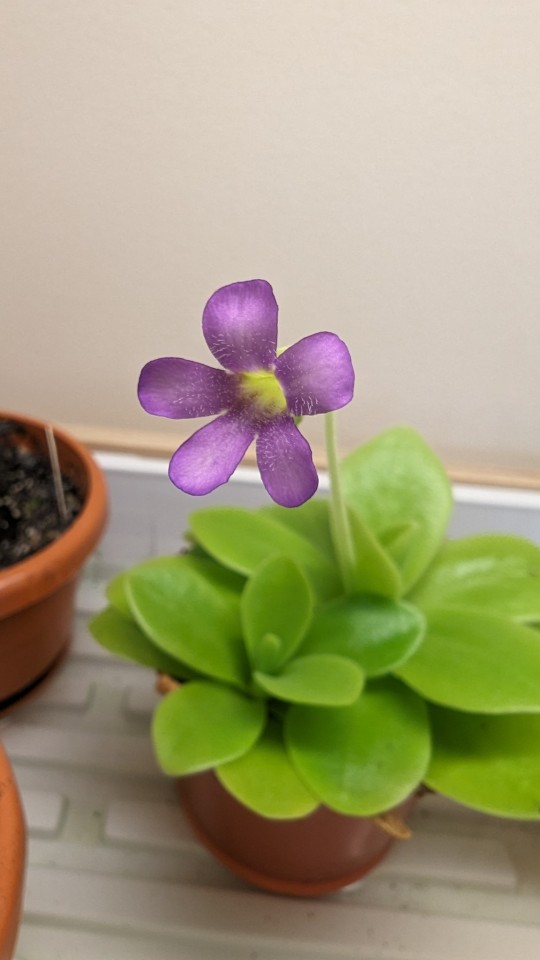



A bunch of my carnivorous plants are in bloom right now! Top left is my Pinguicula gigantea, top right is my Pinguicula aphrodite, bottom left is my Utricularia sandersonii, and bottom right is my Utricularia subulata! Most have been pushing out blooms since July, but this is the first time my P. gigantea has bloomed, I've neglected it several times the past 3 years I've had it, but it's a trooper.
6 notes
·
View notes
Text

Here are some detail shots of the Queen of Flytraps, a card I made especially for @publishinggoblin's upcoming Alleyway Oracles deck!

Aubrey Beardsley's black and white Art Nouveau illustrations inspired the front of the card. Her sparrow headdress comes from the Venus flytrap's genus name "Dionaea" (daughter of Dione), referring to Aphrodite, of whom the birds are one of the symbols.

The back is based on classic Bicycle card back layouts, but composed of various carnivorous plants: sundews, pitcher plants, and bladderwort.
The Alleyman returns on May 16th with the Alleyway Tarot, Oracle of Secrets, and Oracle of Play. Sign up on @kickstarter to be notified when the campaign begins:
https://www.kickstarter.com/projects/publishinggoblin/the-alleyway-oracles
42 notes
·
View notes
Text

Artwork: Utricularia species. Series: Flowers of Kaas.
#utricularia#bladderwort#carnivorous plants#flower art#flower artwork#flower drawing#kaas plateau#flowers of kaas#kas#world heritage site#flowers of western ghats#flora#botany#plants#satara#flowers#floral#wildflowers#wild flowers#botanical#scientific illustration#botanical illustration#illustration#artwork#art#artists on tumblr#drawing#world heritage#unesco#flowers of india
2 notes
·
View notes
Text
I went outside yesterday 🎃



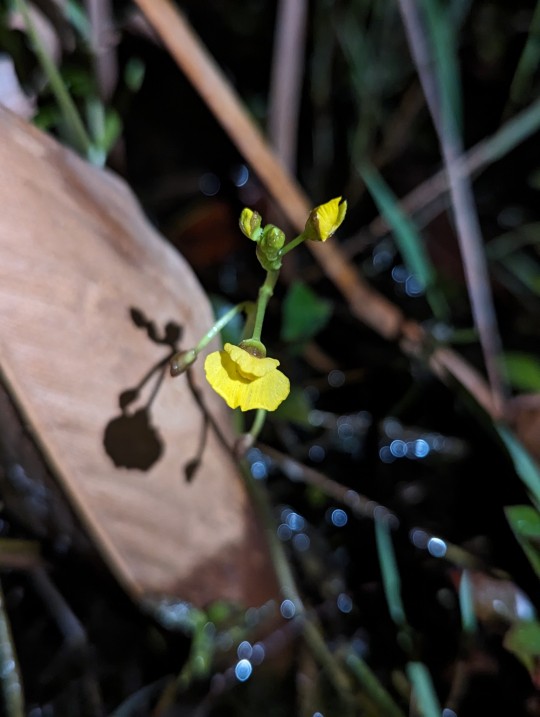

#utricularia#bladderwort#flowers#spider#millipede#aqautic#wetland#i freaking love plants#utricularia??? goes so hard#carnivorous plants#make me so happy#my feet were wet#my socks were soggy
5 notes
·
View notes
Text

Utricularia minor growing wild in the UK!
#utricularia#utricularia minor#carnivorous plant#carnivorous plants#bladderwort#bladderworts#plantlover#plant life#plant blog#botany#horticulture
25 notes
·
View notes
Video
n12_w1150 by Biodiversity Heritage Library
Via Flickr:
Deutschlands flora in abbildungen nach der natur Nurnberg :Gedruckt auf kosten des verfassers,1798-[1862] biodiversitylibrary.org/page/43620168
#taxonomy:binomial=Utricularia intermedia#Botany#Germany#Harvard University Botany Libraries#bhl:page=43620168#dc:identifier=https://biodiversitylibrary.org/page/43620168#Plant#flickr#Utricularia intermedia Hayne#Utricularia intermedia#flatleaf bladderwort#intermediate bladderwort#bladderwort#aquatic#aquatic plant#aquatic plants#botanical illustration#scientific illustration
1 note
·
View note
Text
sexy big ass cute young teen strip on cam
Brazilian tranny wanks off solo
Katerina Hartlova get shower and orgasm with me
Hot teen with fat ass upskirted SUPER SLO MO
Nik sucking when she should be working
After kissing with boyfriend, teen beauty gets tits sucked well
MIXED MATCH UIWP ENTERTAINMENT KING OF INTERGENDER SPORTS
Cumtribut in seema aunty face with audio
Straight stud shows off body while stroking cock solo
Pag kaen sa pwet at pekpek ni misis,grabe ungol nung nilabasan Part 2
#paiock#well-navigated#wamefu#nebalioid#analysing#bladderwort#Trichoglossinae#beltman#fly-dung#shirra#tink#hypothetics#drachmai#capons#Rhaptopetalaceae#Baianism#nonirritable#upanishadic#coxcombical#petrescent
1 note
·
View note
Text

I'm surprised by how much I like this guy. Something about it just makes me happy. Maybe it's just because it's so unfussy and keeps growing even when I'm not looking in all the time
0 notes
Text
youtube
Teaching my daughter about the natural world frustrates me, because I am mad passionate about it, and have to resist the greatest urge to infodump. She is six, and while I can answer her questions, she gets bored as I try to simplify complex things. She also doesn’t have much patience for looking through the microscope waiting for something interesting to happen. When I promised her a video of the most interesting bits, stuff naturally fell into place. Hopefully the fact that I made it especially for her, on her very own channel just for things I made for her, will mean she wants to watch it many times, and it can help with reading practice that way.
#microscope#science#botany#carnivorous plants#bladderwort#pond water#the bog life for me#for kids#homeschooling#Youtube
0 notes